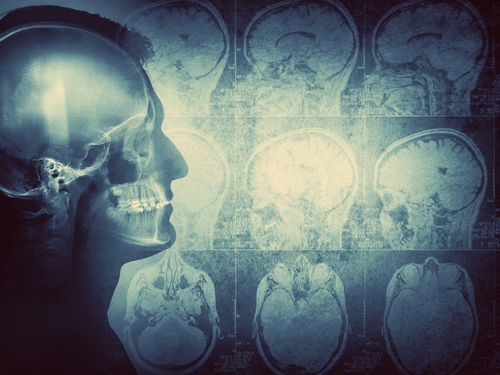Most neurofibromatosis type 1 (NF1) patients with slow-growing brain tumors contain high numbers of tumor-killing immune cells, making them likely to respond to immunotherapies, a global study suggests.
The study, “The molecular landscape of glioma in patients with Neurofibromatosis 1,” was published in Nature Medicine.
Patients with neurofibromatosis type 1 (NF1), a condition caused by inheriting a mutated version of the gene NF1, are more likely to develop gliomas, which are cancers of the brain that are notoriously deadly and difficult to treat. Even though approximately 100,000 people in the U.S. have NF1, relatively little is known about the changes that occur in glioma in NF1 patients (NF1-glioma).
So, an international consortium led by researchers at Columbia University Vagelos College of Physicians and Surgeons, set out to better understand what occurs in NF1-glioma.
Researchers analyzed tumor samples from 56 patients with NF1-glioma. They looked at changes on several levels: genetic (changes in the DNA sequences of cells) epigenetic (how DNA is modified, which can affect whether genes are “turned on or off”), and immunological (how the body’s immune system appeared to be responding to the tumor).
A wide variety of findings were reported, many predictable. For example, the gene TP53, which is well-known to help prevent tumors from forming, often was dysfunctional in tumors. Several other well-studied pathways that tumors exploit to grow also were suggested to be involved in the development of NF1-glioma. These findings may pave the way for future studies to better understand, or even design treatments for, these tumors.
“This inventory will give us a much better idea of how to design individualized treatments, but two findings from our study may have immediate clinical repercussions for NF1 patients,” Antonio Iavarone, the senior author of the study, said in a press release, referring to two notable discoveries that suggest that NF1-glioma might be susceptible to cancer treatments already being employed.
“We were surprised to find that approximately 50 percent of the slow-growing NF1 gliomas contained large numbers of T cells that have the ability to destroy cancer cells,” said Anna Lasorella, MD, a co-author of the study.
T-cells normally eliminate cells in the body that are behaving abnormally, usually because they are either infected with a virus or cancerous. When tumors develop, it means the system by which T-cells usually destroy tumors is malfunctioning, often because the tumor will find ways to avoid or “turn off” T-cells.
Immunotherapy seeks to reverse this process by improving T-cell function and/or inhibiting tumors’ ability to avoid the immune system. So, the fact that many slow-growing NF1-gliomas had a lot of T-cells there already suggests that patients with these tumors might respond especially well to immunotherapies.
In contrast, more aggressive, fast-growing NF1-gliomas were found to be very good at avoiding destruction by T-cells, so these tumors probably are poor candidates for immunotherapy. However, growing so fast comes at a cost; many of these tumors showed elevated rates of DNA errors.
“If we treat the aggressive tumors with DNA-damaging agents, we might be able to introduce even more DNA errors that eventually prevent the cells from replicating and stall the growth of the tumor,” said Iavarone.
A number of therapies for cancer — like chemotherapy and radiation — work by inducing DNA damage in cells, and drugs are being developed to more specifically cause these errors in cancer cells. The results suggest that patients with aggressive NF1-glioma might respond especially well to such treatments.


